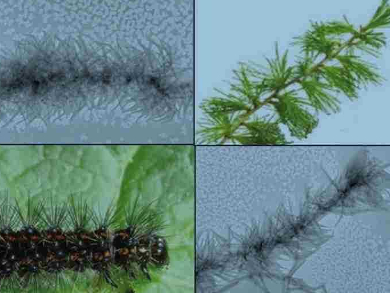Nature creates structures with complex morphologies. Branched and barbed structures common in nature are rare in nanoscale or mesoscale objects formed by bottom‐up self‐assembly. Key characteristics of the morphology of natural objects, such as various types of insects and conifer branches, is that despite their similarities no two individual objects are exactly the same.
Gerald Guerin, Mitchell A. Winnik, University of Toronto, Canada, and colleagues examine how to generate mesoscale objects of similar complexity by polymer self-assembly. The team has shown that a family of complex colloidal structures can be generated by careful manipulation of mixed solvents.
The team used a crystallization-driven self-assembly of polyferrocenylsilane-block-polyisoprene (PFS-b-PI) block copolymers. They added a concentrated solution of PFS-b-PI free chains in tetrahydrofuran (THF) to different decane/THF mixtures and allowed the samples to age for one day at room temperature. By varying the final amount of THF in each mixture, different phenotypes could be prepared, as seen by transmission electron microscopy (TEM). The structures resemble barbed-wire grass, conifer branches, and caterpillars (examples pictured).
As in nature, the structures for each phenotype share common morphological features, but no two structures are identical. Interestingly, adding a more dilute solution of PFS-b-PI in THF to the same THF/decane mixtures led only to the formation of elongated fiber-like micelles. This approach shows how structures with complex morphologies can be prepared by tuning the self-assembly conditions.
- Creating Biomorphic Barbed and Branched Mesostructures in Solution through Block Copolymer Crystallization,
Lin Jia, Gerald Guerin, Yijie Lu, Qing Yu, Ian Manners, Mitchell A. Winnik,
Angew. Chem. Int. Ed. 2018.
https://doi.org/10.1002/anie.201809605



